
The Can Gio Biosphere Reserve (Sac Forest or Can Gio mangrove forest) is a complex of unique diverse fauna and flora species typical of mangroves. Not only significant in terms of scientific research, this place is also a tourist focus of the country.
Geographical location and information on Can Gio Biosphere Reserve
Geographical location
Located in the large delta of the estuaries of Dong Nai, Saigon and Vam Co Dong, Vam Co Tay has coordinates 10 ° 22 ‘- 10 ° 40’ North latitude and 106 ° 46 ‘- 107 ° 01’ longitude. East degree; Can Gio area is located in Ho Chi Minh City, about 40km from the city center.
On the total area up to 75,740ha, there is a diverse population of flora and fauna. Typically here are macaque (Macaca fascicularis) with many species of birds and storks.
Information of Can Gio Mangrove Management Board
– Address: No. 1541 Rung Sac Street, An Nghia Hamlet, An Thoi Dong Commune, Can Gio District, HCMC
– Phone: 08 6684 8407 – 08 3889 4012 – 08 3889 4000.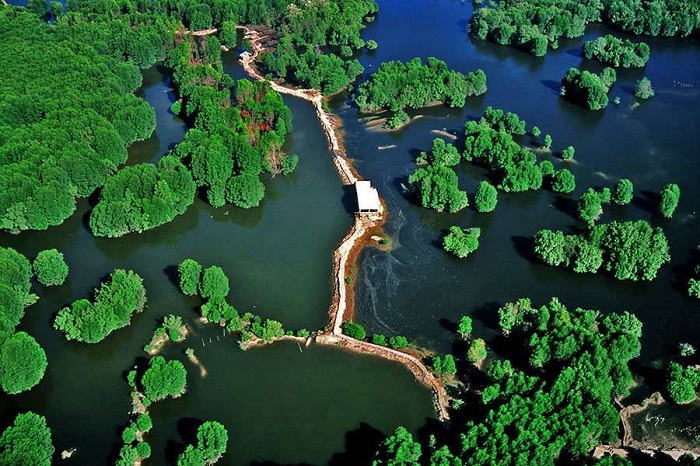 A part of Can Gio biosphere reserve viewed from above
A part of Can Gio biosphere reserve viewed from above
History begin
Before the war, Can Gio was originally a mangrove forest with a rich flora and fauna. Finished here was destroyed by bombs and poison during the resistance war of the nation.
By 1978, when it was merged to Ho Chi Minh City (Ho Chi Minh City), the People’s Committee of the city took practical actions to regenerate the forest. The afforestation mission revived up to 31,000 hectares of trees and nature. The fact that UNESCO’s Man and Biosphere Program – MAB recognized as the first Biosphere Reserve in Vietnam in the network of biosphere reserves of the world in 2000 has truly recognized the contributions and great efforts of the youth volunteer force in Ho Chi Minh City and Can Gio people.
Currently, the forest has been assigned to people here to take care of and manage themselves.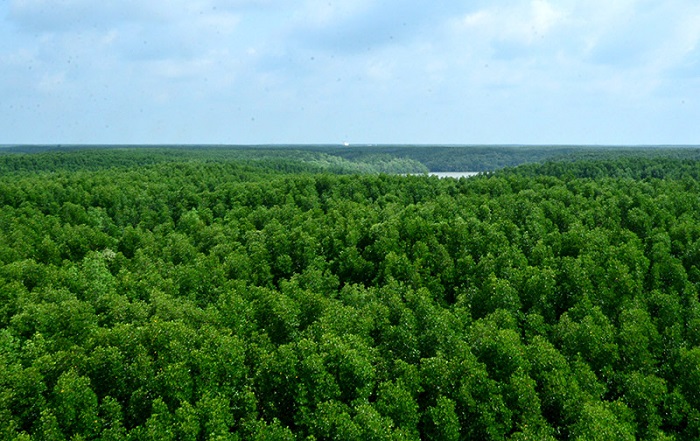 Re-greening Can Gio is the effort of the youth volunteers in Ho Chi Minh City and Can Gio people
Re-greening Can Gio is the effort of the youth volunteers in Ho Chi Minh City and Can Gio people
Rich ecosystem of Can Gio
The Can Gio Biosphere Reserve is a combination of aquatic ecosystems with terrestrial ecosystems, freshwater ecosystems and saltwater ecosystems. The largest mangrove forest in Vietnam has a beautiful natural landscape, diverse fauna and flora. It is home to more than 150 species of plants, provides food and shelter for many aquatic species, fish and vertebrate.
– Plants: 157 plant species belonging to 76 families. Mainly cajuput, white vinegar, pair of mangroves – pampas grass, porridge, etc … and brackish juices such as kumquat, acacia, coconut leaf, coco grass, etc. dominant species Halophyla sp., Halodule sp., and Thalassia sp .; Agricultural arable land with rice, yams, legumes, coconuts, fruit trees.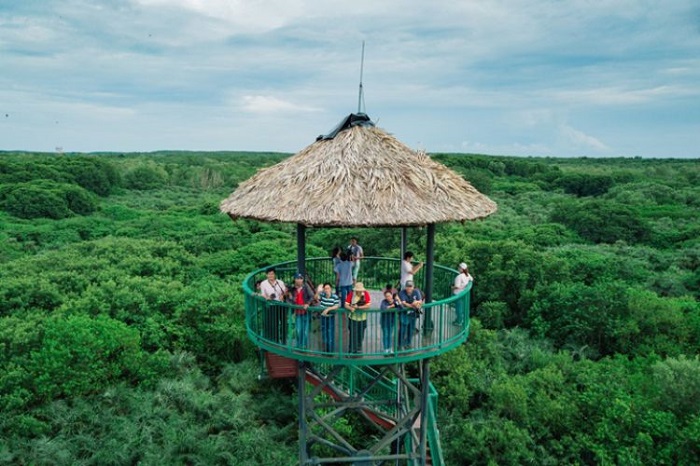 From the observatory admire the rich flora
From the observatory admire the rich flora
– Animals:
+ Aquatic invertebrates has more than 700 species
+ Fish fauna of over 130 species, some species of economic value are Pineapple, Ngat fish, Seabass …
+ The vertebrate fauna has 9 species of amphibians such as toads and frogs. 31 species of reptiles including crocodile – python – snake – water monitor …, of which 11 reptile species are listed in the Vietnamese Red Book such as gecko (gekko gekko), water monitor (varanus salvator), python earth (python molurus), python reticulatus, crocodile (bungarus fasciatus), cobra (naja naja), king cobra (ophiophagus hannah), turtle (chelonia mydas), lilac crocodile (crocodylus porosus) ) … 19 species of mammals including monkeys, otters, wild cats … 145 bird species including 51 waterfowl species and 79 non-waterfowl species living in many different habitats. 130 species of algae belonging to 3 branches of algae – diatoms – blue algae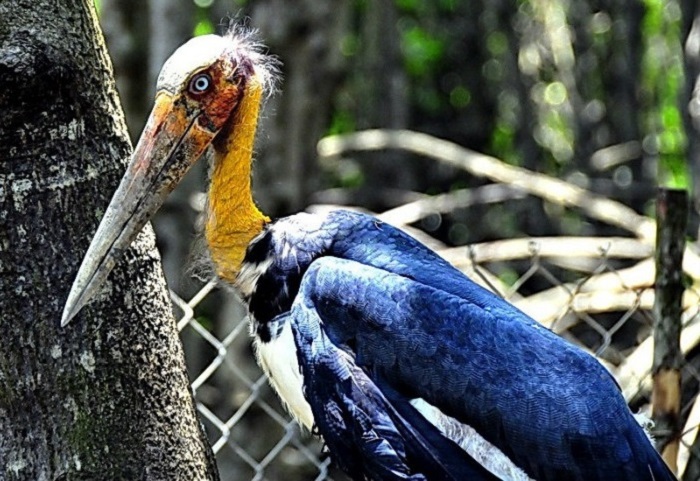 Habitat, provides food for 145 bird species
Habitat, provides food for 145 bird species
According to experts, Can Gio biosphere reserve has been really restored, cared for and well protected. It plays an important role in scientific research and ecotourism development.
Evaluate the functions and roles of Can Gio
Besides being a habitat and providing food for many rare and precious plant and animal species, Can Gio mangrove forest also plays a role as “green lung” of Saigon. The function of this “lung” is to clean air and wastewater from industrial cities in the upstream of Dong Nai – Saigon river to the East Sea. In addition, it cannot be denied the role of Can Gio mangrove forest in coping with and limiting the damage caused by natural disasters, storms and floods.
Tourism Can Gio Biosphere Reserve
Vam Sat ecotourism area located in the core zone of Rung Sac was established in 2000. It was immediately interested by domestic and foreign tourists to visit and learn. The highlight of the trip is visiting bat lagoon, river boat trip, bird sanctuary visit, contact with wild monkeys and learn about the flora and fauna here.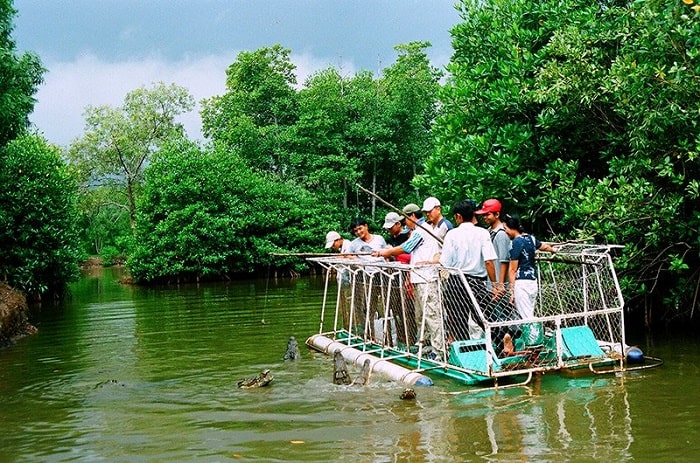 Cruise on the river to explore flora and fauna in Vam Sat
Cruise on the river to explore flora and fauna in Vam Sat
Can Gio tourism at any time, this place can be visited at any time, so it is convenient for visitors to arrange to come on weekends. Whether it is a tour of Ho Chi Minh City or a private group is also extremely interesting.
Guests can take bus number 75 departing from 23/9 Park or rent a motorbike and follow the Nha Be route Duyen Hai road to Can Gio. Or follow the bus from Ben Thanh market and down Binh Khanh ferry, running along the open road, both sides of the road are lovely resorts hiding in the green space of trees.
Then by car, boat, by small boats, visitors will enjoy wriggling through mangrove forests, through mangrove forests, melaleuca forests, nipa palm forests. You can also search for the once legendary Forest of Sac; or stop at Dan Build bridge and take a motorboat to visit Dam Doi at Vam Sat and conquer the 28-meter high Tang Bong tower to see the panoramic view of Can Gio mangrove forest and each herd of storks flying back to the nest at sunset.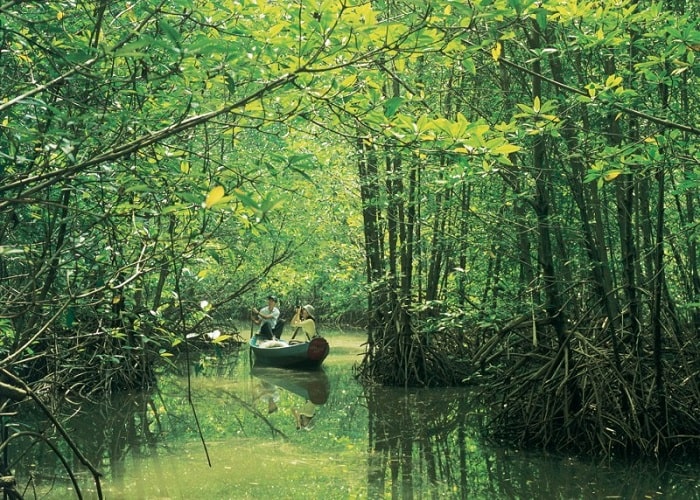 A corner of Dam Doi
A corner of Dam Doi
When night falls, guests stay in the comfortable resorts so that they can see the forest in front of them. If you stay in the depths of Vam Sat, you will be surprised to see the bats swing on the tree trunk on moonlit nights. The next morning if you want to see more clearly, you can take a canoe or canoe to the Bird Sanctuary located in the reserve.
In addition, in Can Thanh town, visitors should combine to visit the April 30 tourist area – where there is a beach of the same name, Ong Thuy General Nam Hai mausoleum worships Ong fish. Experience in exploring Can Gio biosphere reserve recommends you to take the Nghinh Ong festival on August 16th of lunar calendar to come here. When hundreds of boats gather here, together with groups of musicians and amateurs gather, the atmosphere is extremely noisy.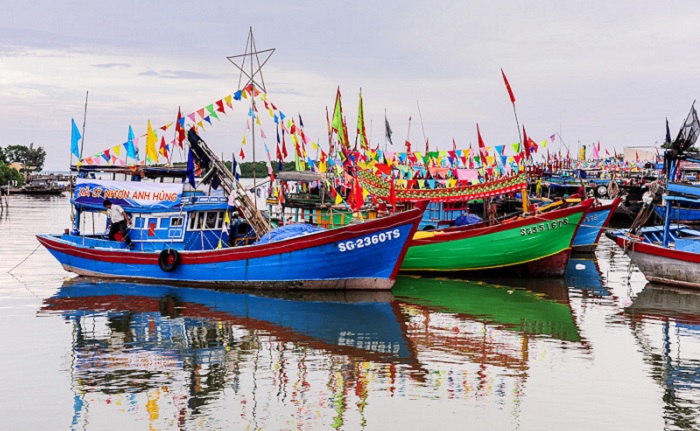 Canoe and boat gather during the Nghinh Ong festival in Can Gio. Photo: Pham An Duong
Canoe and boat gather during the Nghinh Ong festival in Can Gio. Photo: Pham An Duong
Some other prominent sights: Monkey Island, Cao Dai Temple, Can Thach Center, Hang Duong Market …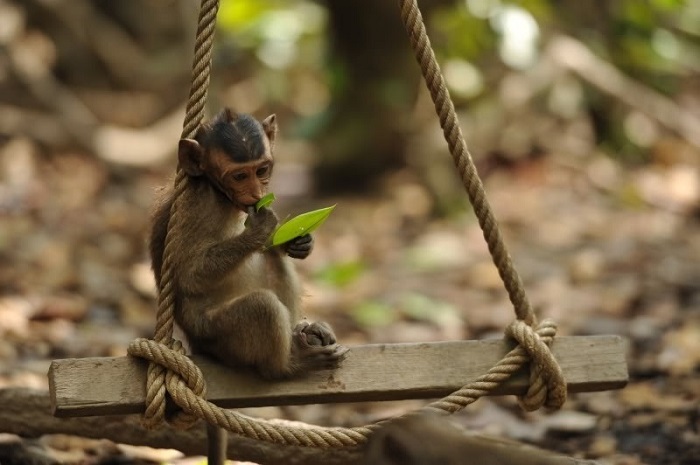 Monkey Island Can Gio
Monkey Island Can Gio
Can Gio mangrove forest is a red address in the book to preserve the cultural and natural heritage that will be an attractive destination for not only those who love to explore, but also for anyone who wants to come to the forest base. Thrilling stories, or simply want to rest, relax and enjoy the delicacies of the river region such as attractive oysters, shrimp or catfish.
Conclusion
Belonging to a large city like Saigon with a high population density, industrial activity develops, the story of protecting and sustainably developing the ecosystem of Can Gio Biosphere Reserve is getting more and more difficult. The task of propagating and educating communities to protect mangroves is extremely urgent, not only contributing to helping the city respond to climate change, but also establishing a solid “green wall” to create favorable conditions for people have more stable lives.
Photo: Internet
